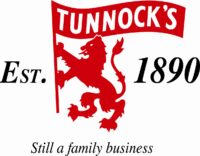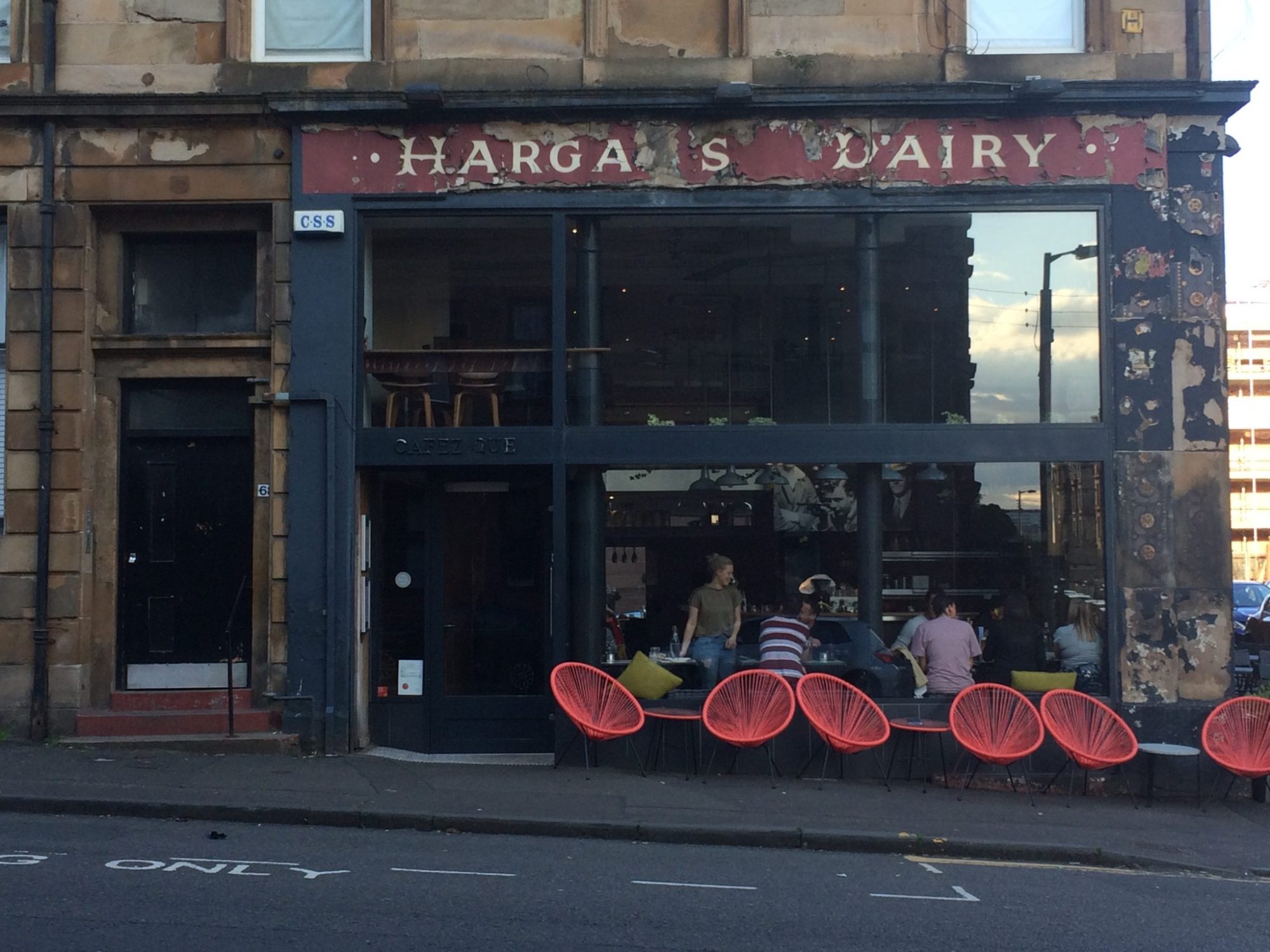In this series we’re delighted to welcome Fay Young onboard as co-host of the episodes which were recorded between March and May 2024.
The first episode was launched on 27 June with an episode released weekly until 29 August.
Tune in to get an exclusive audio tour of Central Station, find out about Glasgow’s Gaelic roots through the study of place-names, and learn about the amazing work of Glasgow photographer Bash Khan.
See below for the episodes & transcripts
SERIES 3 EPISODE 1
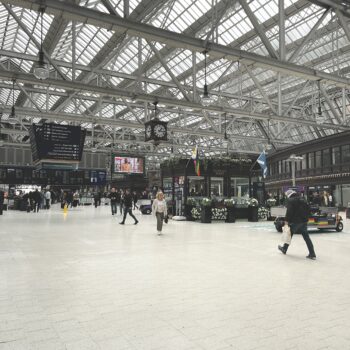
Hidden Stories of Glasgow Central Station with Jackie Ogilvie
How often do you rush through Glasgow Central Station without a second glance? Never again! Join us on a live, on-location tour with guide Jackie Ogilvie. Discover the station’s fascinating history, hidden architectural details and a behind-the-scenes look at the successful Glasgow Central Station tours. Plus, learn about Jackie’s exciting museum project in the works.
- Live tour experience with guide Jackie Ogilvie
- Unveiling the hidden history and architecture of Glasgow Central Station
- Exploring the popular Glasgow Central Station tours
- Exclusive scoop on Jackie’s upcoming museum project
- 00:00:01 — The stories underneath
- 00:32:00 — Welcome to the Museum
- 00:53:00 — WWI Memorial Art Installation
- 01:05:00 — The Victorian Platform
- 01:15:00 — Central Station’s evolution
- Visit https://www.glasgowcentraltours.co.uk/index.aspx for more information on Glasgow Central Station tours.
SERIES 3 EPISODE 2
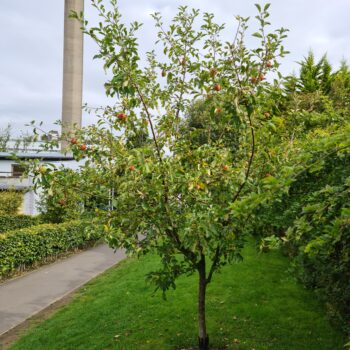
Glasgow's Gaelic Place-names with Dr Alasdair Whyte
In episode two, Dr Alasdair Whyte, a Gaelic singer, writer, and Research Fellow at the University of Glasgow, joins Fay to explore the medieval Gaelic roots of Glasgow through its place-names.
Alasdair’s research takes us into parts of Glasgow where Gaelic was spoken a thousand years ago. In this green landscape where cattle grazed, we even catch a shadowy glimpse of the farmer’s daughter who owned Shettleston. Yes, Shettleston! When you know where and how to look, place-names are full of human history.
In this conversation Alasdair draws on the evidence in his recently published book Glasgow’s Gaelic Place-names, co-authored with Katherine Forsyth and Simon Taylor. It caused quite a stir and we are about to find out why.
- Uncover the Gaelic origins of Glasgow’s place-names with Dr. Alasdair Whyte.
- Hear stories behind names, like the medieval farmer’s daughter of Shettleston.
- Explore findings from “Glasgow’s Gaelic Place-names,” co-authored by Alasdair Whyte.
- See how Gaelic names reflect Glasgow’s landscape and features.
- Understand the importance of preserving Gaelic place-names.
- 00:00:10 — The significance of Gaelic place names in Glasgow
- 00:19:41 — The origins and meanings of Gaelic place names in Glasgow
- 00:38:10 — Gaelic place names reflect the natural landscape and features of the area
- 00:41:05 — The evolution of place names and their adaptation over time
- 00:51:08 — Preserving Gaelic place names and promoting cultural heritage awareness
SERIES 3 EPISODE 3
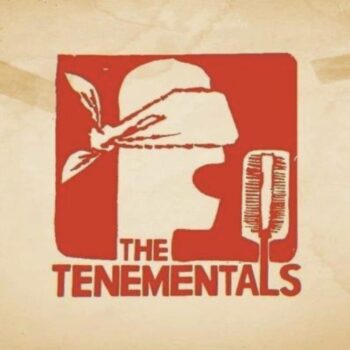
The Tenementals: A History of Glasgow in Song with Prof. David Archibald
In this episode David, a Professor of Film & TV at the University of Glasgow, discusses with Niall and Fay the innovative project which aims to make and tell history through music rather than traditional academic means. The conversation explores how the band, composed of academics, artists, musicians, and filmmakers, challenges conventional historical narratives.
- ‘Liberated from books’: How The Tenementals’ history is told and made in song
- Why one song, Peat Bog Soldiers, has already made history
- Hear a little of The Tenementals live in Glasgow
- 00:00:00 — Can a rock band make history?
- 00:01:15 — The Tenementals, a wild research project
- 00:02:00 — Constructing a transmedia history of a city
- 00:18:37 — Songwriting process
- 00:33:01 — Hope and Revolutionary Histories
SERIES 3 EPISODE 4

Rediscovering Mackintosh: A Decade After the Glasgow School of Art Fire with Dr Robyne Calvert
- Robyne Calvert’s journey and deep connection to the Mackintosh restoration project
- The unique aspects of Mackintosh’s design
- The significance of historical photography to the preservation process
- 00:00:27 — Mackintosh’s design, not strictly mathematical and intricate reconstruction
- 00:00:42 — Showcasing Mackintosh’s bespoke craftsmanship
- 00:02:26 — Calvert’s PhD and deep connection to the Mackintosh restoration project
- 00:06:05 — Museum object handling to ensure historical accuracy and preservation.
- 00:08:42 — Photography significance in restoration, capturing details otherwise lost.
SERIES 3 EPISODE 5

Empower Women for Change: Navigating Glasgow as New Scots with Layla Sadr Hashemi and Ume Chauhdry
In today’s episode, Fay introduces Layla Sadr Hashemi and Ume Chauhdry, who share their experiences with the project Thistles and Dandelions, designed to connect ethnic minority women with Glasgow’s cultural heritage. This initiative by Empower Women for Change has been transformative, fostering a sense of belonging among participants.
Layla, originally from Iran, and Ume, from Pakistan, discuss their initial struggles with isolation, language barriers, and cultural differences upon arriving in Glasgow. Discovering EWfC provided them a supportive community and opportunities for personal and professional growth through workshops and training.
Thistles and Dandelions, one of EWfC’s significant projects, ran throughout 2023, engaging women with Glasgow’s heritage beyond just observation. Layla and Ume also describe their involvement with the David Livingstone Birthplace, learning skills in curating, conservation, and exhibition planning, which enhanced their confidence and sense of community.
- Symbolism of the thistle and its representation of Scottish history and resilience.
- Layla and Ume discuss the specific challenges that immigrants face when adapting to life in Glasgow.
- Emphasis on the importance of community support in helping new Scots feel welcomed and empowered.
- 00:00:00 – 00:01:00 — Introduction to the Thistles and Dandelions Project: Discussion on the project’s symbolism and objectives.
- 00:05:15 – 00:06:30 — Challenges Faced by New Scots: Layla and Ume discuss language barriers and cultural integration.
- 00:12:45 – 00:14:00 — Empowerment Through Community Support
- 00:20:30 – 00:22:00 — Personal Stories of Overcoming Adversity: Layla and Ume share personal stories of resilience.
- 00:28:15 – 00:30:00 — Future Vision for the Project: Plans for expanding the project’s reach and impact
- You can find out more about Empower Women for Change on their website
- Learn about the Thistles & Dandelion project on their project blog
- Follow Glasgow City Heritage Trust on social media: @GlasgowHeritage #IfGlasgowsWallsCouldTalk
- Produced by Inner Ear (innerear.co.uk) for Glasgow City Heritage Trust
- Sponsored by Tunnock’s (tunnock.co.uk)
SERIES 3 EPISODE 6
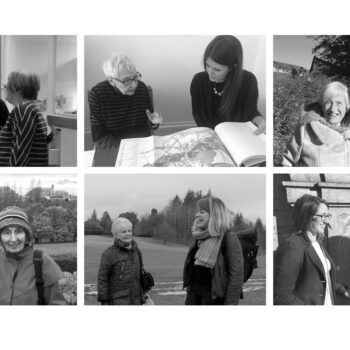
Women In Architecture with Jude Barber & Nicola McLachlen from Voices of Experience
- Introduction to Women in Architecture
- Early career challenges and milestones for women architects
- Mentorship and building support networks
- Future vision to enhance gender diversity
- 00:00 – 02:00 — Discussion on the representation and contributions of women in architecture.
- 05:00 – 07:00 — Insights into the early career challenges and milestones for women architects.
- 12:00 – 14:00 — Importance of mentorship and building support networks within the industry.
- 18:00 – 20:00 — Personal stories of overcoming gender biases and industry obstacles.
- 25:00 – 27:00 — Discussion on future initiatives to enhance gender diversity and inclusion in architecture.
Learn more:
- Find out more about the Voices of Experience conversations on their website
- Follow Glasgow City Heritage Trust on social media: @GlasgowHeritage #IfGlasgowsWallsCouldTalk
- Produced by Inner Ear (innerear.co.uk) for Glasgow City Heritage Trust
- Sponsored by Tunnock’s (tunnock.co.uk)
SERIES 3 EPISODE 7
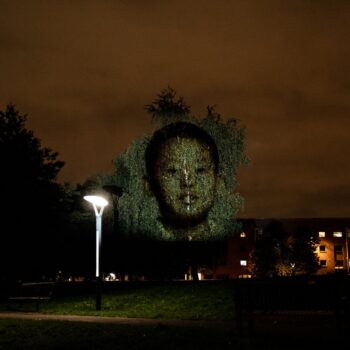
A Place for Stories with Bash Khan
- 02:06 — 02:09 Highlights the intrinsic value of individuals in the community.
- 02:24 — 02:28 Reflects on the value within communities.
- 11:03 — 14:02: The importance of recognising diverse contributions within the community.
- 23:63 — 25:55 Bash Khan talks about the role of planners in community projects.
- 35:55 — 39:52 This segment focuses on valuing individuals within the community.
- Discussion on valuing people’s roles and acknowledging their efforts.
- Highlights the need for effective planning and involvement from the community to ensure success.
- Underscores the necessity of appreciating people’s contributions and efforts.
- Addresses the need to recognise and cherish each person’s unique contributions.
- Emphasises the collective strength and importance of community members working together.
Learn more:
- Have a look at Bash’s work on his website
- Follow Glasgow City Heritage Trust on social media: @GlasgowHeritage #IfGlasgowsWallsCouldTalk
- Produced by Inner Ear (innerear.co.uk) for Glasgow City Heritage Trust
- Sponsored by Tunnock’s (tunnock.co.uk)
SERIES 3 EPISODE 8
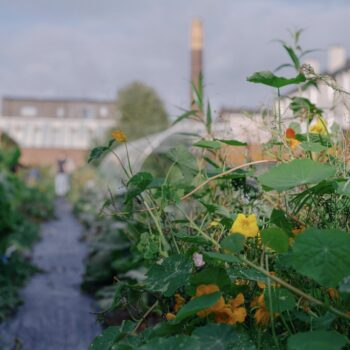
Restoring the Relationship with the Land with Luna Amanita from The Wash House Garden
- Introduction to the Wash House Garden
- Timestamp: 00:00:00
- Luna Amanita describes the Wash House Garden in Parkhead, East Glasgow, noting its diverse volunteer base and the various capacities in which people engage with the space.
- Historical Significance and Current Use of the Land
- Timestamp: 00:02:00
- Luna explains the historical background of the land, believed to be the drying ground for the old Parkhead wash house and possibly used for food growing during the war. She discusses the transformation of the space into a market garden.
- Gardening Practices and Soil Health
- Timestamp: 00:04:00
- Luna details their ecological gardening practices, emphasising soil health through composting and organic material. She mentions the challenges and labour involved in maintaining the garden.
- Beekeeping and Education Initiatives
- Timestamp: 00:13:00
- Luna talks about their beekeeping program, including hive inspections and the educational courses they offer. She shares her personal experience and the responsibilities of managing the bees with her team.
- Community Engagement and Volunteer Involvement
- Timestamp: 00:20:10
- Luna discusses the variability in volunteer numbers and the importance of community engagement. She highlights efforts to make the garden more accessible and responsive to the needs and interests of the local community.
Learn more:
- Connect with The Wash House Garden via their website and follow them on Instagram @TheWashHouseGarden
- Follow Glasgow City Heritage Trust on social media: @GlasgowHeritage #Is Glasgow Walls Could Talk
- Produced by Inner Ear (innerear.co.uk) for Glasgow City Heritage Trust
- Sponsored by Tunnock’s (tunnock.co.uk)
SERIES 3 EPISODE 9
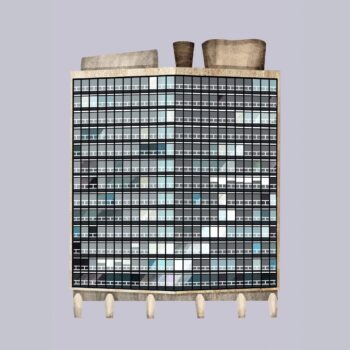
Brutal Glasgow with Rachel Loughran & Natalie Tweedie
This week we explore Glasgow’s love-hate relationship with brutalism and discuss our upcoming Brutal Glasgow exhibition with digital curator Rachel Loughran and Glasgow based illustrator Nebo Peklo (Natalie Tweedie), who’s work will be displayed in the interactive, multimedia exhibition.
The idea for the exhibition arose from Rachel’s admiration of Natalie’s drawings on Twitter, and united by their shared interest in brutalism they have come together to create Brutal Glasgow. They also discuss the significance of brutalism in Glasgow, touching on its artistic, social, and political aspects, and the debate over whether to demolish or restore such buildings
- 00:00:00 – 00:00:03 Rachel Loughran starts by discussing the public’s “knee jerk reaction” to Brutalist buildings, setting the tone for the episode.
- 00:19:42 – 00:19:43 Natalie Tweedie acknowledges the complexity of evaluating Brutalist architecture, saying, “That’s such a huge question,” indicating the depth of the discussion.
- 00:40:12- 00:40:15 The conversation touches on the need to “have a proper look” at Brutalism and the factors surrounding it, suggesting a deeper exploration of the topic.
- 01:00:07 – 01:00:09 There’s a personal reflection on exploring Glasgow, particularly the East End, highlighting how Brutalist architecture influences perceptions of different city areas.
- 01:19:21 – 01:19:24 The episode concludes with a mention of Glasgow Heritage, encapsulating the importance of the city’s architectural legacy and the podcast’s role in preserving these discussions.
- Complexities of Brutalism – polarising views.
- The historical and cultural significance and value in preserving these buildings.
- How the architectural style of Brutalism connects to a broader understanding of Glasgow city’s character and history.
- Focus on Glasgow Heritage, emphasising the significance of the city’s architectural legacy
Learn more:
- Check out Natalie’s work on her website
- Follow Glasgow City Heritage Trust on social media: @GlasgowHeritage #IfGlasgowsWallsCouldTalk
- Produced by Inner Ear (innerear.co.uk) for Glasgow City Heritage Trust
- Sponsored by Tunnock’s (tunnock.co.uk)
SERIES 3 EPISODE 10
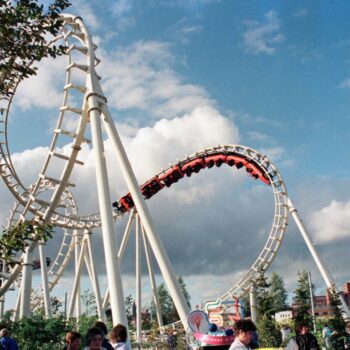
After the Garden Festival with Lex Lamb, Kenny Brophy & Gordon Barr
Urban Prehistorian Kenny Brophy, Project Leader Lex Lamb, and Holder of the Official Garden Festival Umbrella Gordon Barr for a conversation with Niall & Fay in front of a live audience, to learn how they have used crowdsourcing to build an ever-growing digital record of the hundreds of pavilions, sculptures and attractions that made up the Garden Festival, as well as the experiences of those who made it happen.
Items with Garden Festival stories to tell were discovered across the UK and further afield, from the large (the Coca-cola Roller Coaster, now in Suffolk) to the small (a Garden Festival tea-towel, now in Papua New Guinea). But in addition to relic artefacts and traces in the landscape, the team identified something else: the absence of a proper record of this pivotal event, while memories fade and documents are lost.
- Reflecting on the Legacy of the Garden Festival (00:00 – 02:30): The discussion opens with reflections on how the Glasgow Garden Festival has shaped the city’s landscape and cultural memory.
- The Impact of Urban Regeneration Projects (07:45 – 09:30): Insights into the broader impact of urban regeneration efforts in Glasgow, particularly those initiated in the wake of the Garden Festival.
- Personal Stories and Memories of the Festival (15:30 – 17:00): The guests share their personal experiences and memories of attending the festival, highlighting its significance on a personal level.
- Challenges in Preserving Historical Sites (23:00 – 25:00): The conversation turns to the challenges faced in preserving the historical sites associated with the Garden Festival and other urban regeneration projects.
- Looking Forward: Future Projects and Their Potential Impact (30:45 – 32:00): The episode concludes with a discussion about future urban projects in Glasgow and their potential impact on the city’s cultural and physical landscape.
Learn more:
- Check out After the Garden Festival’s website here to learn more the project
- Follow Glasgow City Heritage Trust on social media: @GlasgowHeritage #IfGlasgowsWallsCouldTalk
- Produced by Inner Ear (innerear.co.uk) for Glasgow City Heritage Trust
- Sponsored by Tunnock’s (tunnock.co.uk)
If Glasgow’s Walls Could Talk is produced by Inner Ear and kindly supported by Tunnock’s.

